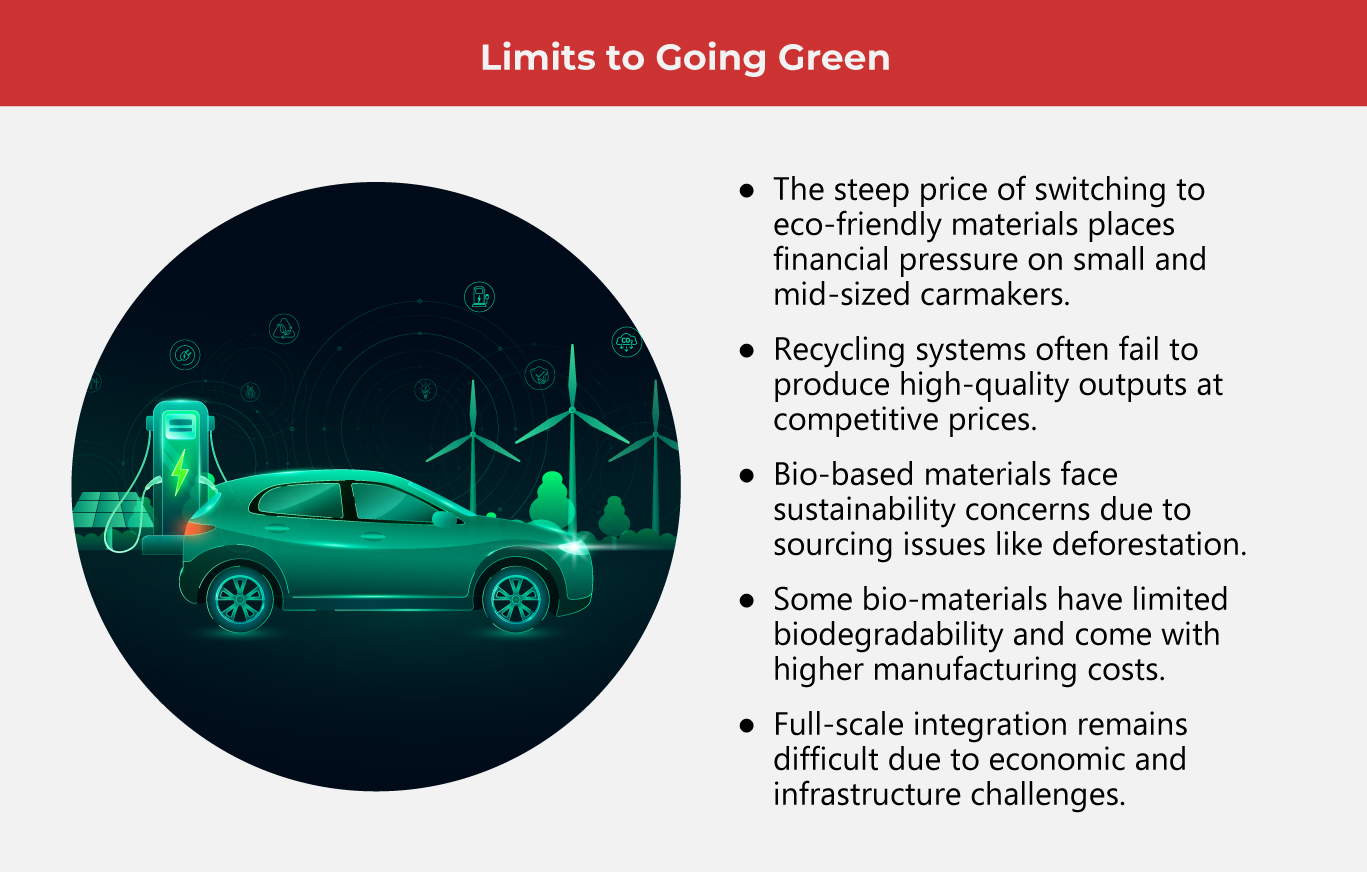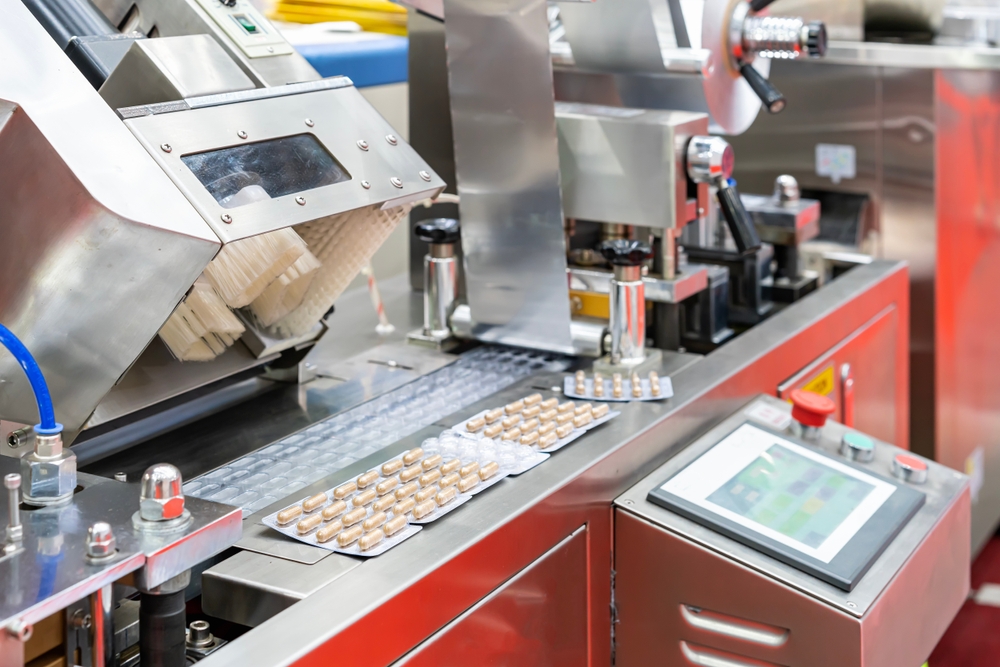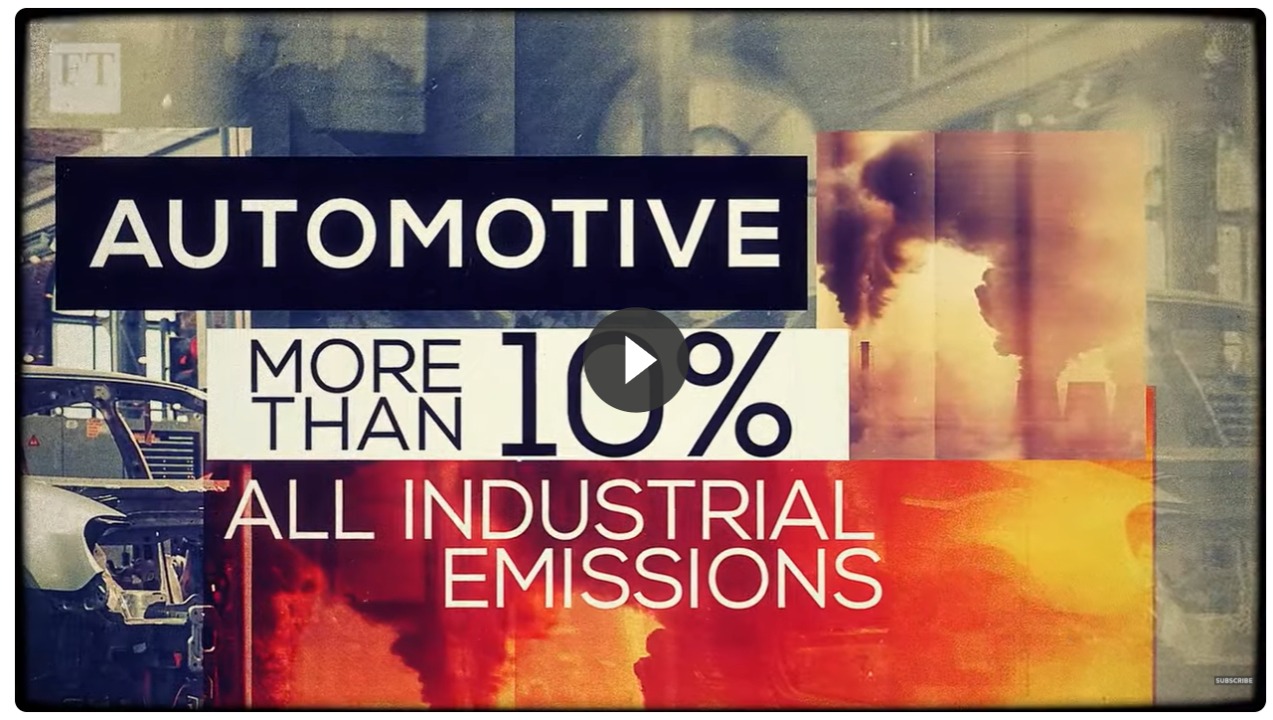Green Trends That Drive the Auto Industry

The automotive market is redefining their strategies to put environmental responsibility at the forefront of innovation. Stricter environmental policies and rising consumer expectations are pushing manufacturers to rethink their approach, moving away from conventional materials in favor of eco-friendly alternatives like recycled metals and plastics. This growing momentum reflects a broader commitment to greener, more responsible production practices across the industry.
With today’s growing awareness of ecological footprint, automotive materials are being reassessed through the lens of key environmental indicators. Traditional options such as steel, aluminum, and fossil fuel-based plastics are linked to high carbon emissions during extraction and manufacturing.
These materials also signal negative indicators like resource depletion, due to their reliance on nonrenewable inputs, and increased pollution from production waste and end-of-life disposal. As pressure builds to reduce the industry’s environmental impact, these long-standing materials are becoming a central focus in the shift toward sustainable alternatives.
To remedy this, original equipment manufacturers (OEMs) and automakers are adopting innovative materials and cleaner production practices to improve environmental indicators across the entire product life profile. This future-ready shift supports a circular economy model, embedding sustainability from raw material sourcing to end-of-life vehicle disposal.
(Also read: The Rise of Sustainable Automaking)
Top 8 eco-friendly shifts in the auto industry
As the automotive sector accelerates toward a more sustainable future, eco-conscious innovation, guided by principles like design for manufacturing, is reshaping how vehicles are developed, ensuring efficiency, reduced waste, and improved environmental performance at every stage.
- Goals to cut carbon emissions
Worldwide, transport ranks as the second‑biggest contributor to greenhouse gas emissions. Governments are stepping up climate action, with the EU targeting a 55% cut in emissions by 2030. The UK plans to transition to zero-emission cars by 2035. These targets are pushing automakers to embrace greener production methods.
- Tight environmental controls
Countries are giving stricter recycling and end-of-life vehicle rules. By 2030, the EU plans to enforce rules mandating that a quarter of the plastic used in new cars come from recycled sources, including dismantled vehicles. Comparable regulations in India and other regions are tightening rules around manufacturer accountability. Governments worldwide are backing the industrial market shift with subsidies, tax cuts, and incentives to boost green practices.
- Better supply chain management
Bio-based and recycled materials are often easier to obtain because they rely on renewable resources or existing waste streams, reducing dependence on finite raw materials like petroleum or mined metals. Their supply chains are typically shorter and more localized, lowering transportation needs and emissions. Additionally, advancements in recycling infrastructure and agricultural byproduct use make these materials more accessible.
- Cutting-edge manufacturing solutions
Digital innovation is steering the automotive industry toward sustainability. From AI-powered fuel efficiency systems to smart navigation that cuts traffic-related emissions, technology is making driving cleaner. Tools like blockchain and digital twins also improve supply chain transparency. As the renewable energy market expands, full integration of smart tech will be key to advancing greener mobility.
- The rise of EVs
EVs are emerging as a defining green trend in the sustainable auto industry, with global adoption surging. Beyond cutting emissions, EVs drive economic value, projected to add up to $300 billion in gross value added across Europe by 2035. Surging EV demand is driving battery recycling efforts, as OEMs seek sustainable sources for lithium, nickel, and cobalt.
- Recycling
Recycled materials are gaining traction in automotive manufacturing. In particular, recycled plastics are reshaping plastic manufacturing due to their availability and ease of integration. Mechanically processed plastics lead the way, while EU regulations mandating 25% recycled content are accelerating adoption. Though chemical recycling shows promise, high costs and limited infrastructure still slow broader implementation.
- Bioplastics
Bioplastics are emerging as a cleaner alternative to fossil-based plastics, with automakers exploring their use in interior parts and upholstery. Sourced from renewable materials, they promise lower emissions—but high costs and supply chain hurdles still limit large-scale adoption. Forecasts show a 25.1% annual growth through 2035, yet they’re expected to make up just 18% of automotive plastics.
- Sustainable tires
Jaguar Land Rover (JLR) is pushing sustainable product design and development forward by introducing new Pirelli tires made from over 70% renewable and recycled materials. These tires, debuting on select Range Rover models with 22" wheels, feature innovations like silica from rice husks, plant-based resins, recycled carbon black, and FSC (Forest Stewardship Council)-certified rubber. This marks a major step toward greener manufacturing without compromising performance or quality.
(Also read: Top 10 Sustainable Trends that Boost Manufacturing)

The roadblocks to greener cars
While momentum is building around sustainable materials, the path to large-scale adoption is proving far from straightforward.
- Big costs, slow shifts
Adopting eco-friendly materials may be a win for the planet, but it’s an expensive move for many automakers. Upfront investment in sustainable alternatives, from production inputs to cleaner energy systems, remains high. This poses a heavy burden on small and mid-sized manufacturers, who often lack the financial flexibility to compete with larger OEMs leading the green transition.
- Supply uncertainty
Automakers face hurdles in securing a consistent flow of eco-conscious materials. The infrastructure that supports bio-based and recycled inputs, such as plastic waste and natural fibers, remains underdeveloped. This inconsistent availability makes it difficult for manufacturers to scale production reliably. As a result, procurement costs often rise, limiting the broader adoption of sustainable vehicle components.
- Luxury-limited adoption
Sustainable alternatives to plastic and leather are typically around 20% costlier than conventional options. This price difference makes them more viable for luxury models while limiting their use in mainstream vehicles. As a result, broader adoption in the automotive industry may lag until production costs for eco-friendly materials become more competitive.
- Processing challenges
Transforming recycled and natural materials into automotive-grade components is far from straightforward. Many require additional processing to meet strict quality standards. Natural fibers, for instance, absorb moisture, which can lead to warping and weakened performance in humid conditions. Automakers are often forced to use specialized treatments, increasing production costs and complicating the shift to sustainable product development.
Despite these challenges, the push for sustainable automotive manufacturing continues to gain traction. Eco-materials, digital solutions, and low-emission technologies are steadily reshaping the industry's supply chains and production models. While adoption remains uneven, growing innovation and supportive policies signal a future where green mobility is not only feasible but fundamental to the auto sector’s evolution.
As one of the Top 20 EMS companies in the world, IMI has over 40 years of experience in providing electronics manufacturing and technology solutions.
We are ready to support your business on a global scale.
Our proven technical expertise, worldwide reach, and vast experience in high-growth and emerging markets make us the ideal global manufacturing solutions partner.
Let's work together to build our future today.
Other Blog




